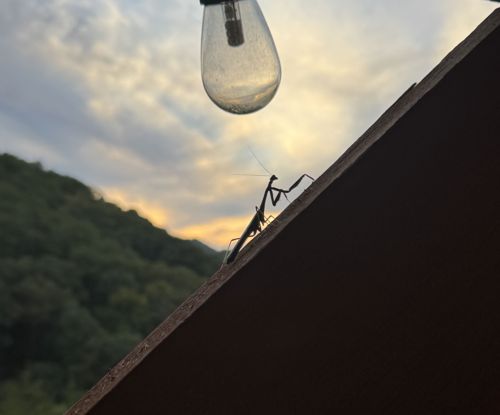Praying Mantis
Scientific Name: Mantis religiosa (or other species like Tenodera sinensis)
Order & Family: Order: Mantodea, Family: Mantidae
Size: Typically 2 to 6 inches (5-15 cm) in length, varying by species (females are generally larger than males).

Natural Habitat
Gardens, meadows, forests, and other areas with ample vegetation and prey, often found on shrubs, tall grasses, or decorative plants.
Diet & Feeding
Strictly carnivorous predators. Their diet primarily consists of other insects such as flies, moths, crickets, grasshoppers, and sometimes even small vertebrates like lizards, frogs, small birds, or rodents.
Behavior Patterns
Mantises are ambush predators, known for their distinctive 'praying' stance, where their forelegs are held folded as if in prayer while they wait for prey. They are highly camouflaged and will remain motionless for extended periods. They have excellent vision and can rotate their heads almost 180 degrees. Mating can be a dangerous affair for males, as females sometimes cannibalize them during or after copulation.
Risks & Benefits
Generally beneficial to humans as natural pest control, as they feed on a variety of garden pests. They pose no direct risk to humans; they do not sting, bite significantly, or carry diseases. However, some non-native species (like the Chinese Mantis) can be detrimental to native insect populations and even small hummingbirds.
Identified on: 10/7/2025